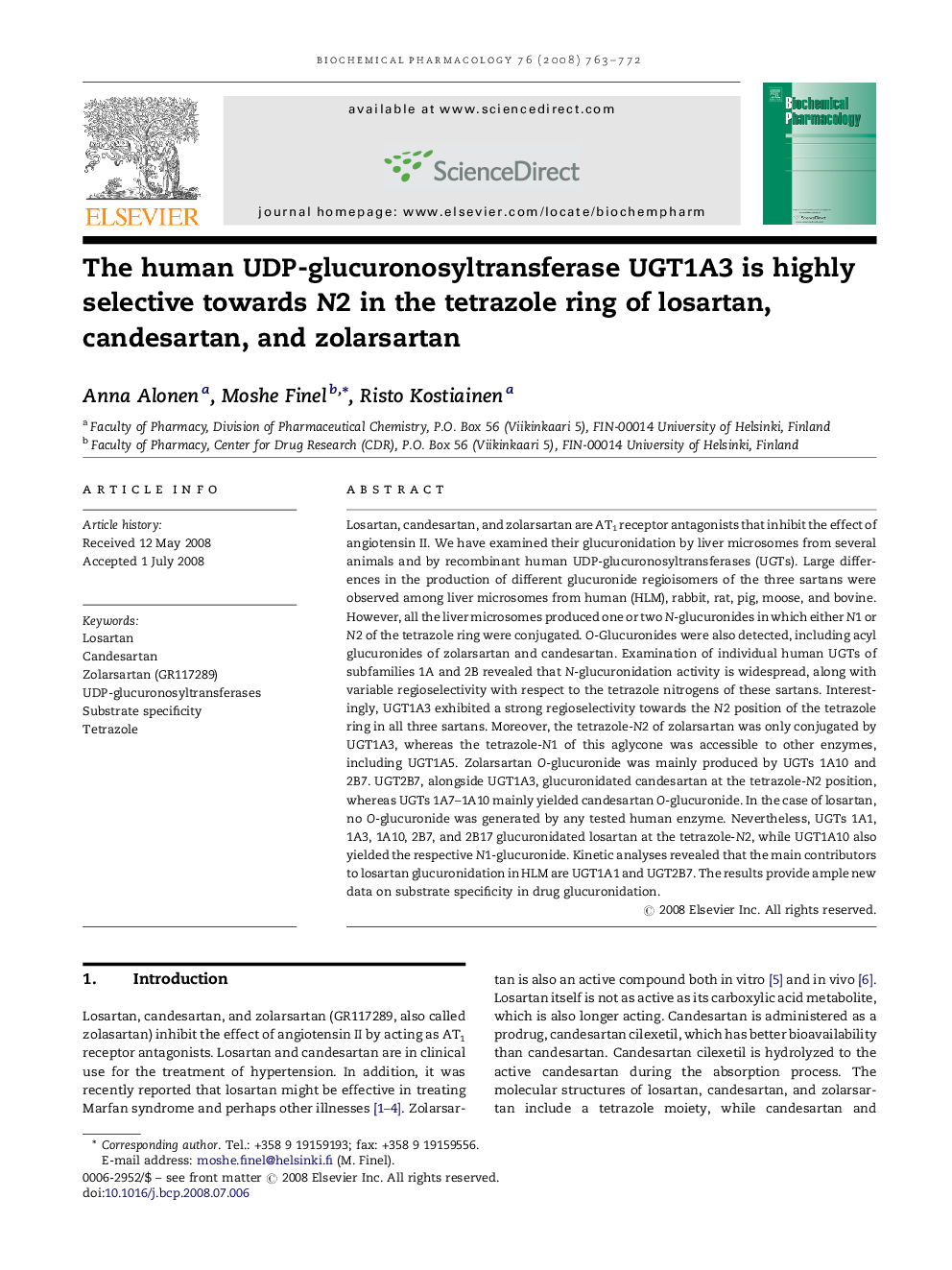| کد مقاله | کد نشریه | سال انتشار | مقاله انگلیسی | نسخه تمام متن |
|---|---|---|---|---|
| 2515026 | 1118497 | 2008 | 10 صفحه PDF | دانلود رایگان |

Losartan, candesartan, and zolarsartan are AT1 receptor antagonists that inhibit the effect of angiotensin II. We have examined their glucuronidation by liver microsomes from several animals and by recombinant human UDP-glucuronosyltransferases (UGTs). Large differences in the production of different glucuronide regioisomers of the three sartans were observed among liver microsomes from human (HLM), rabbit, rat, pig, moose, and bovine. However, all the liver microsomes produced one or two N-glucuronides in which either N1 or N2 of the tetrazole ring were conjugated. O-Glucuronides were also detected, including acyl glucuronides of zolarsartan and candesartan. Examination of individual human UGTs of subfamilies 1A and 2B revealed that N-glucuronidation activity is widespread, along with variable regioselectivity with respect to the tetrazole nitrogens of these sartans. Interestingly, UGT1A3 exhibited a strong regioselectivity towards the N2 position of the tetrazole ring in all three sartans. Moreover, the tetrazole-N2 of zolarsartan was only conjugated by UGT1A3, whereas the tetrazole-N1 of this aglycone was accessible to other enzymes, including UGT1A5. Zolarsartan O-glucuronide was mainly produced by UGTs 1A10 and 2B7. UGT2B7, alongside UGT1A3, glucuronidated candesartan at the tetrazole-N2 position, whereas UGTs 1A7–1A10 mainly yielded candesartan O-glucuronide. In the case of losartan, no O-glucuronide was generated by any tested human enzyme. Nevertheless, UGTs 1A1, 1A3, 1A10, 2B7, and 2B17 glucuronidated losartan at the tetrazole-N2, while UGT1A10 also yielded the respective N1-glucuronide. Kinetic analyses revealed that the main contributors to losartan glucuronidation in HLM are UGT1A1 and UGT2B7. The results provide ample new data on substrate specificity in drug glucuronidation.
Journal: Biochemical Pharmacology - Volume 76, Issue 6, 15 September 2008, Pages 763–772